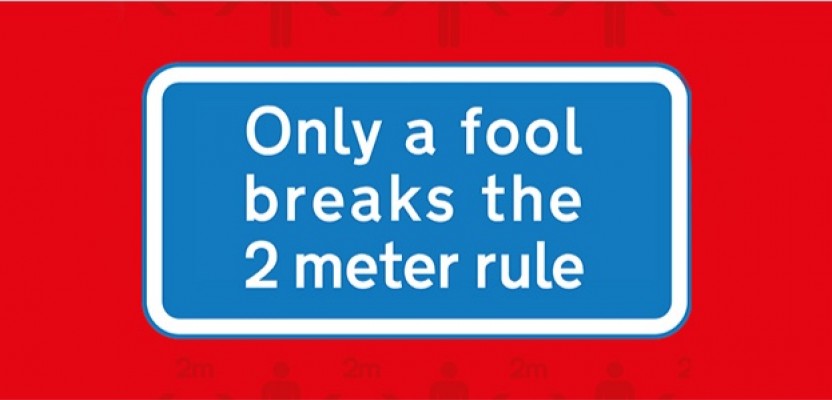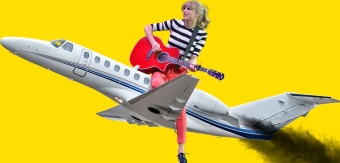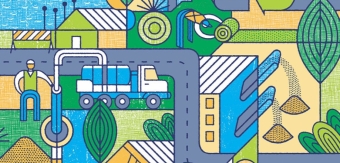'Keep safe, mate.' I think I’ve heard this more in the past few months than in all the years I spent in London. It feels like a new salute, something you are compelled to say in our email sign-offs or opening lines. I’ve even seen a topic trending online named ‘Pandemic Email Etiquette.’ It had 22,000 people reading it.
As crazy as it sounds, we are stepping into a new normal. Lockdown measures will likely be eased way earlier than needed, to avoid a disastrous financial crash that could leave us all with an empty back pocket. The United States are probably in a pretty bad spot right now in terms of infected people – but it’s not like the UK or the rest of Europe is ready to go back to work with no consequences.
The future of work is likely to be different than what we have all envisioned in previous years. It is still too early for the Internet of Things and AI, but the technology is already there to enforce stronger surveillance measures and guarantee the safety of us all, and the worst part is that they may all be necessary to avoid a second wave. If you’re relentlessly waiting for the day in which your employer will call you back into the office, brace yourself – it might be a different environment from what you can remember.
Employers will have to resort to emergency containment measures to at least prevent a further rise in infection rates. And I’m not sure we’ll like what they’ve come up with so far.

Photo by Markus Spiske from Pexels
A new work routine
Imagine to start your morning routine with a shiny new app, which you have downloaded under strict instructions from your employer, enabling you to self-check your daily symptoms and temperature. If you are in good health, you get a daily work pass. If not, you may have to stay home sick, or work remotely.
Let’s say you are completely healthy and granted a pass to work. Public transport is still enforcing social-distancing measures and everyone on board wears a mask. Even if you are not using the public transport, is it worth risking to catch COVID-19 by walking around with no protection? You will likely have to wear a mask as you walk, drive, park and take the elevator to your beloved office floor.
The new office might be different from what we can remember
You follow a one-way studded with foot-stamps to encourage social distancing whilst waiting in an ordered queue to get past the entrance. A sneeze or cough guard is vigilant to ensure no one slips through the net and everyone is safely out of risk. And by the time you finally get to your plexiglass-enclosed desk, you have already dodged the occasional couple of coworkers moving around without a face mask. Which, by the way, you should wear on your face, not your chin.
If your company is large enough to have the appropriate funds, you might even be checked by thermal cameras to make sure your body temperature is always within the allowed range. And you can rest assured that communal lunch breaks are a memory of the past.
Welcome to the future of work.

Photo by Anna Shvets from Pexels
A future far from science fiction
To me, it is almost funny to think that all this could have very well been the basic society structure of a sci-fi novel. And even then, it is so stereotypically dystopian that both Huxley and Orwell have unleashed floods of ink on the topic over half a century ago. But some of these measures are already being adopted – though it may be too early to kick up a fuss about it.
The Wall Street Journal reports that offices in Midtown Manhattan will measure body temperatures as employees enter a 32-floor office tower at Rockefeller Centre. Apps are already being developed to gamify social distancing, giving employees a score based on how well they have managed to stay far from their colleagues. Distance would be measured using WiFi and Bluetooth within the same building.
These systems draw inspiration from the ones used in China to help slow the spread of the virus, and promise to promote health and safety to ensure employers can better monitor and enforce separation between coworkers. According to the WSJ, this will help employers identify those workers that are most at risk of catching the coronavirus infection.
Some employers are drawing inspiration from systems used in China to contain the spread of the virus
The creative sector won't be excluded. Some employers such as advertising giant Interpublic Group of Companies are already exploring ways to separate employees in three groups according to their health risks. Still, there is a lot of uncertainty surrounding the issue. The only sure thing is that we should probably say goodbye to creative brief meetings as we know them and possibly even to tapping on your team member’s shoulder to ask a second opinion on a piece of work.
Again, as frightening as all of this may sound for privacy reasons, it may be necessary to adopt these measures to make sure the pandemic doesn’t spread any further. Privacy concerns arise, of course, but those will have to wait until a later time – we don’t know how and if all employers will adopt these measures. Though we can probably expect some minor issues here and there if they do.

Photo by Enigma Visual Solutions.
Goodbye Open Office?
Open office spaces are obviously at risk. According to Obex founder and CEO Mark Canavarro on Bloomberg, some employers are already sending out requests for office hardware and plexiglass panels to separate desk spaces.
But it may be too early to call upon the powers of democracy and start daydreaming about the old days. The flip side of the coin is that not all companies are able to afford such renovation in the workplace.
Some will have to keep working remotely until the end of the year, or else be forced to call in their employees without the appropriate safety measures in place – which would mean further concerns for employees themselves and more risks for their health.
Not every employer can afford to entirely renovate the office space
This is especially true of smaller companies with less than 50 employees, often packed within an office the size of a studio flat. Most creative companies are just about that size or smaller, which means most creatives may have to risk going back to a dangerous environment, or be asked to keep working remotely for as long as they can.
With the second option obviously being the safest, and considering the somewhat flexible industry we are part of, we can expect most employers to go down that route in the near future, whilst possibly adopting "furlough shifts" for their staff. In which case, a dystopian future for your workplace may be quite far off.
But even if you are a creative working for a large corporation, you can probably relax. Thermal cameras will not spy on your browsing history or steal your personal data, your location will only be tracked within the work building, and though stricter measures may have to come into place, it is unlikely that you will have an enforcement agent watching your every keyboard stroke from behind your shoulder.
In all cases, it may be too early to know what the future holds for workplaces around the world, and for work thinking in general. The mentioned current trends in social distancing measures can give us a hint, but we will never know until we truly get back to our office lives. The only thing we can say for sure is that it will be a new normal – and one we may have to get used to for quite a while.






